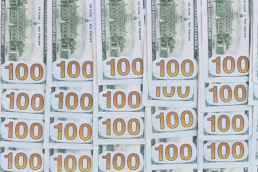Identifying Counterfeit Currency Through Spectroscopy
Before the United States adopted a national currency in 1863, over 1500 banks across the country were printing their own notes. The amount of varied bills from separate banks made it extremely difficult to tell the difference between genuine and fake money. This caused a huge problem with counterfeiting to the point where it was estimated that up to a third of all money in circulation was counterfeit. The U.S. thought instituting a national currency would help resolve the problem, but it wasn’t long before that was reproduced as well. Within 2 years, the Secret Service was formed in order to defeat counterfeiting. Although it is easier to control now, counterfeit currency continues to be a dangerous global issue. With the advance of home technology and widespread access to advanced printing methods, the creation of fake money can be done more easily with minimal skill involved. It is important for the authorities to quickly identify any fraudulent notes and take them out of circulation.
Because of high quality scanning and printing devices, counterfeits are becoming very sophisticated. Therefore, it is becoming more and more challenging to rely on the human eye, counterfeit detection pens, or texture of paper as a means to detect a fake bill. Law enforcement must turn to more precise instruments, such as spectrophotometers, to aid in this process. Using a spectrophotometer, a full chemical profile of the money can be discovered in a few seconds. This simple and quick test can also disclose the process used to manufacture the counterfeit.
Mass spectroscopy reveals that real currency shows even distribution of mass spectrum ions across the surface of the money regardless of age or wear. This information can be used as the standard for genuine dollars and is very different from what shows up on the forged bills in testing.
Not only can the collected data help detect fraudulent currency, but it can also be used to incorporate additional security measures into circulating money to make it even harder to copy. An invisible code or stamp with this chemical information is already in discussion for use in Brazilian currency.
Another way a spectrophotometer is able to find counterfeit money is through revealing the presence of fluorescence. The larger denominations of paper money in the United States are embedded with fluorescent threads which will glow under UV light. In the $100 bill the fluorescence is pink, the $50 bill has yellow, the $20 bill glows green, the $10 bill has red threads and the $5 bill, blue. The technique of using different colors in each bill helps eliminate the bills from being bleached and reprinted as larger denominations by counterfeiters. When studied under a fluorescence spectrophotometer, the intrinsic fluorescence lifetime of the threads can be determined. This information will set the genuine bills apart from the counterfeits. Although the full process is time consuming and expensive, many businesses choose to use UV lights as a generally reliable source to expose the fluorescence in money.
Visit sensing.konicaminolta.us/us for more information on spectrometers and spectrophotometers










